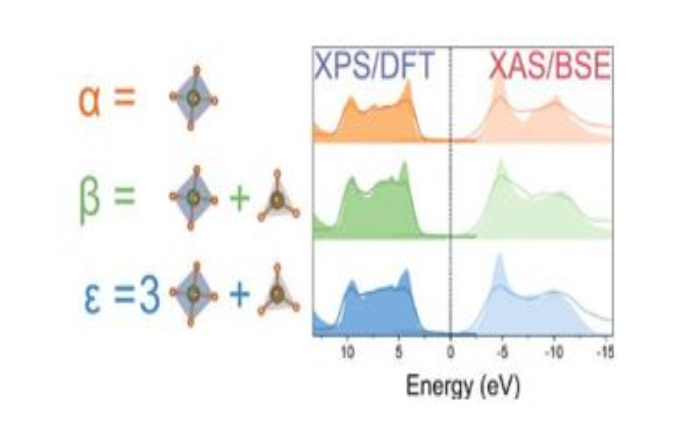Paper published: Influence of Polymorphism on the Electronic Structure of Ga2O3

Image:The octahedrally- and tetrahedrally-coordinated Ga environments making up the alpha, beta and epsilon polymorphs of gallium oxide, alongside experimental and calculated valence band and conduction band density of states.
A paper has just been published in Chemistry of Materials, written by Dr Jack Swallow who obtained his PhD in condensed matter physics from Liverpool in 2020, supervised by Tim Veal and Vin Dhanak. In February 2020, he began a postdoctoral research position at the Department of Materials, University of Oxford.
The paper explores the properties of gallium oxide, a material generating a lot of current interest due to its potential for use in high power electronics and in solar-blind ultraviolet photodetectors due to its very wide band gap of 4.7 eV and significant conductivity. Gallium oxide films and crystals with three different crystal structures were probed using advanced photoemission and x-ray absorption techniques. The subtle influence of the gallium atoms’ environment(s), within oxygen octahedra or both octahedra and tetrahedra, on the electronic structure of the material is probed. This is further explored using a range of theoretical approaches, providing successively greater agreement with experiment at increasing computational cost.
In addition to Jack, the work also involved Physics and Stephenson Institute’s Tim Veal and PhD students, Leanne Jones, Matt Smiles and Phil Murgatroyd and colleagues from Liverpool School of Engineering, Dr Joe Roberts and Prof Paul Chalker. International collaboration was also involved with leadership from University College London and contributions from Diamond Light Source and from across Germany and the USA. The insights obtained in this work provide the basis of future developments of fundamental understanding and applications of gallium oxide polymorphs.